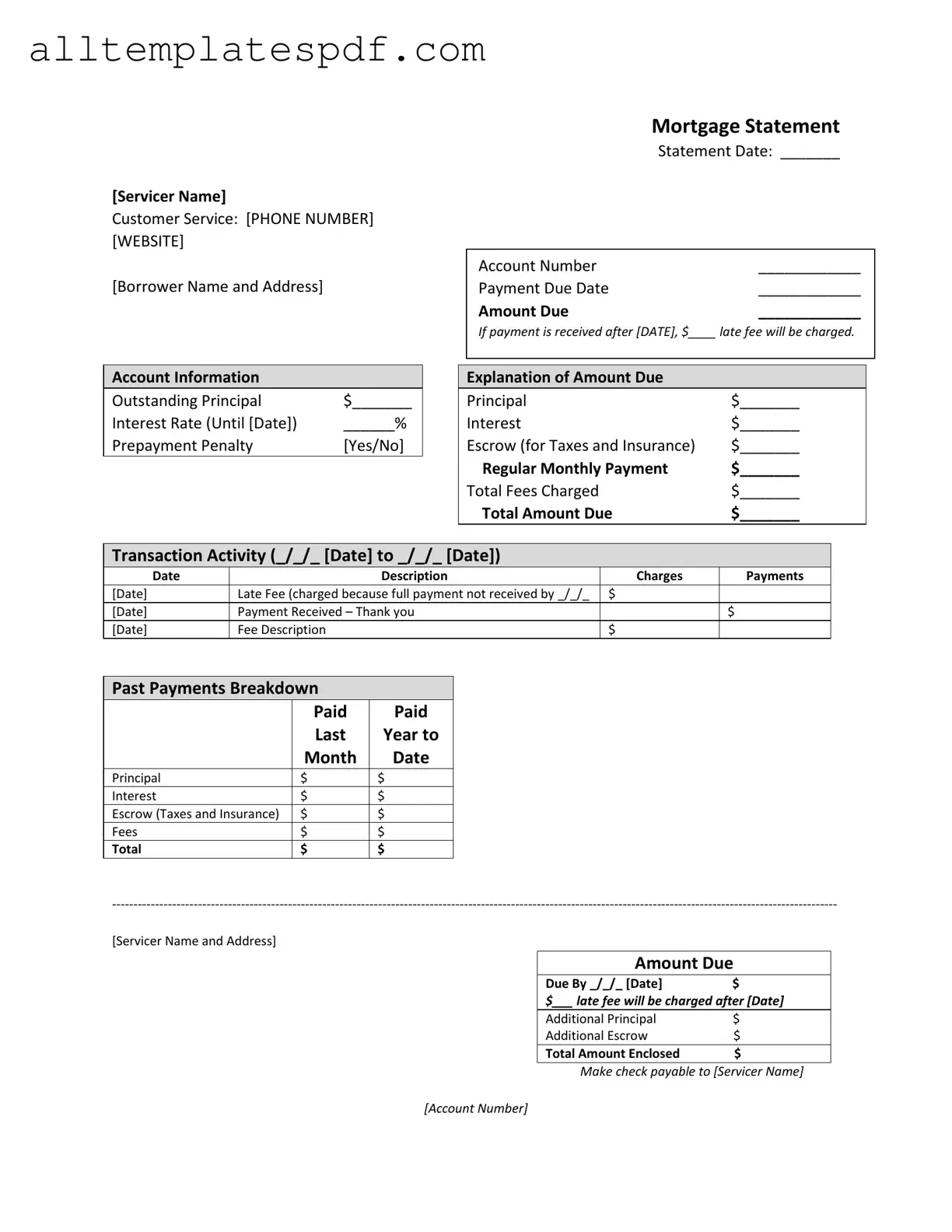Filling out a Mortgage Statement form can seem straightforward, but many individuals make common mistakes that can lead to confusion or even financial repercussions. Understanding these pitfalls can help ensure that your mortgage process goes smoothly.
One frequent error occurs when borrowers fail to include their account number. This number is crucial for identifying your specific mortgage account. Without it, the servicer may struggle to process your payment or respond to your inquiries. Always double-check that you’ve entered the correct account number before submitting your form.
Another common mistake is neglecting to verify the payment due date. Many people assume they know when their payment is due, but it’s essential to confirm this date on the statement. Missing a payment deadline can lead to late fees and negatively impact your credit score.
Many individuals also overlook the section detailing the amount due. It’s important to ensure that you are sending the correct total. If you miscalculate or ignore additional fees, your payment may be insufficient, leading to further complications.
Additionally, some borrowers fail to read the important messages section carefully. This part often contains crucial information about partial payments and potential consequences of delinquency. Ignoring these messages can result in misunderstandings about your payment status and obligations.
Another mistake is not providing the correct contact information for the servicer. If you need assistance or have questions, having the right phone number and website is essential. Double-check that this information is accurate to avoid delays in communication.
Sometimes, individuals forget to include a check or payment method when submitting their forms. It’s easy to assume that the servicer will know you intend to pay, but without a payment included, your account may fall further behind.
People also often neglect to review their transaction history for accuracy. Ensure that all payments and charges are correctly listed. If there are discrepancies, address them promptly to avoid future issues.
Another frequent oversight involves ignoring the delinquency notice. This notice serves as a warning about the potential consequences of late payments. Being aware of your delinquency status can help you take action sooner rather than later.
Lastly, many borrowers fail to seek help when experiencing financial difficulty. The form often includes resources for mortgage counseling. If you find yourself struggling, reaching out for assistance can provide you with options and support to manage your mortgage effectively.
